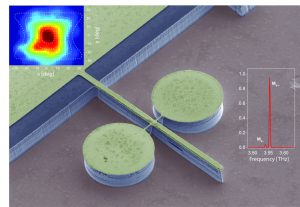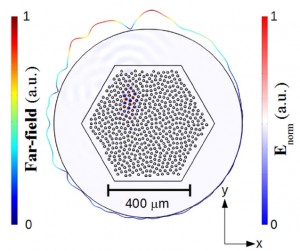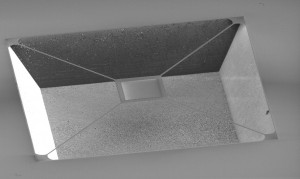We just published a new article on Light: Science and Applications: Continuous-wave laser operation of a dipole antenna terahertz microresonator, by L. Masini, A. Pitanti et al.
 In this paper we show how a properly designed THz quantum-cascade laser cavity can emit vertically at 3 THz with low divergence (±10°). This is done by coupling two whispering-gallery-mode cylindrical resonators through a suspended metallic wire which locally shapes the electric field as in a linear dipole antenna. When the right balance between coupling and losses is reached, the dipole-antenna microresonator shows impressive performances, with CW operation at temperatures exceeding 50 K, roughly 0.35 mW of power and low beam divergence.
In this paper we show how a properly designed THz quantum-cascade laser cavity can emit vertically at 3 THz with low divergence (±10°). This is done by coupling two whispering-gallery-mode cylindrical resonators through a suspended metallic wire which locally shapes the electric field as in a linear dipole antenna. When the right balance between coupling and losses is reached, the dipole-antenna microresonator shows impressive performances, with CW operation at temperatures exceeding 50 K, roughly 0.35 mW of power and low beam divergence.
You can find the full article here

